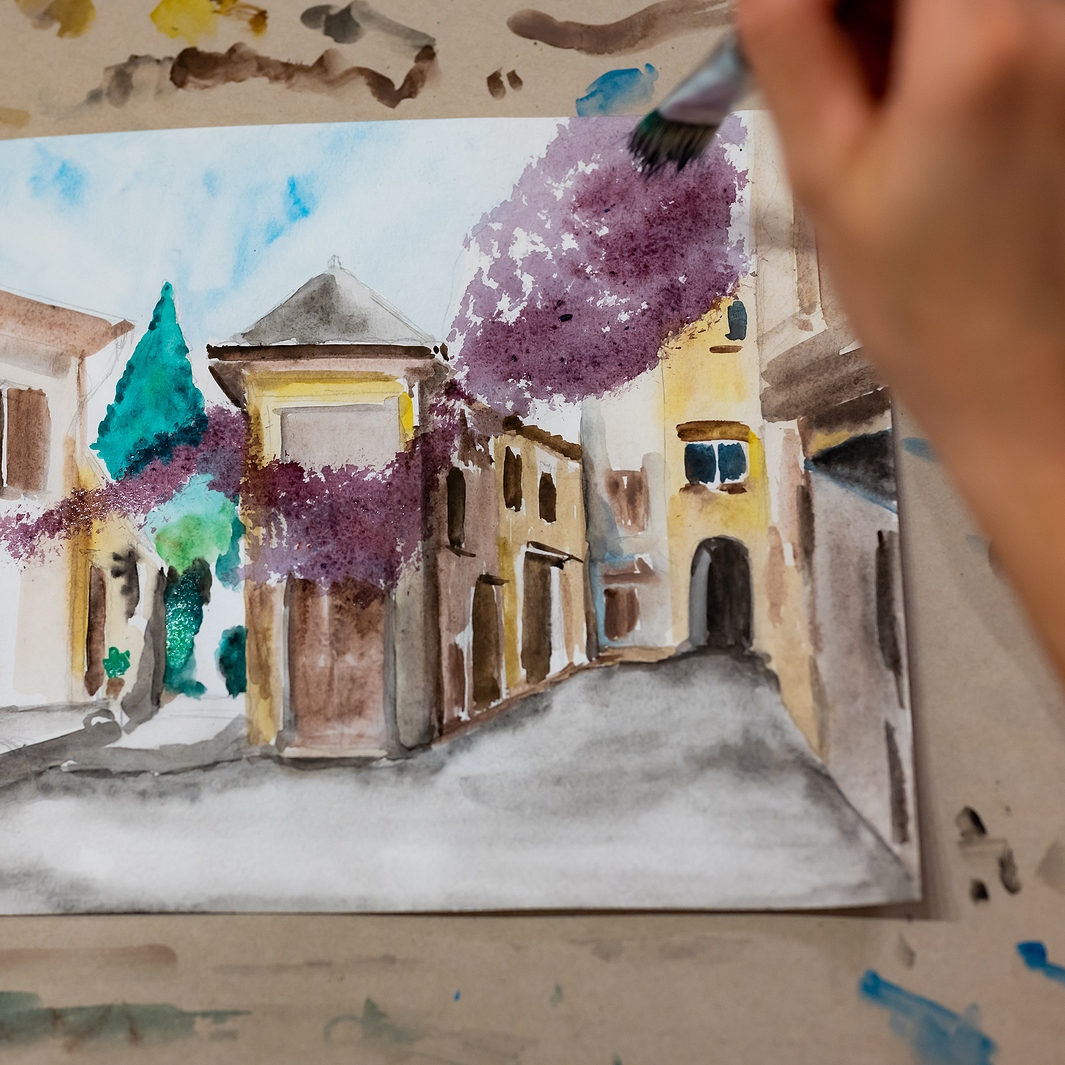If you are a beginner artist wishing to experiment with watercolor painting, consider the below tips on watercolor paints, color creation, and painting techniques.
Watercolors are attractive and often used to create an impressionist feel to a painting. Watercolor helps an artist paint candid pictures in many colors. The content writers from essaywritercheap emphasize that for beginner artists, it can be a very interesting challenge. So, take your time to learn some watercolor painting tips to improve your skills.
Watercolor Painting Supplies
Begin with the basics for watercolor painting. You will need proper watercolor paper – a thick, almost card-like paper that can be found in arts and craft stores, brushes of different sizes, paints, water, newspaper, paper towels, and, perhaps, pencils that can also be found in arts and craft stores.
Spread the newspaper over the tabletop to keep it clean and place your paper, a container of water, paints, and brushes, all on top of it. Keep the paper towels handy for drying the brushes after rinsing the paint off.
Watercolor painting can begin with or without a drawing. If you desire to experiment with expressive colors and shapes, a drawing is not necessary. Otherwise, consider beginning by sketching the desired image – for example, a house in a field with flowers. Watercolor is great for painting landscapes with the focus on one particular object and a wash of color in the background. Sketch only the outlines of the image and leave the details for the paints. The sketch does not need to be perfect, as it is about impressionistic art and expressive colors.
Adding Water to Watercolor Paints
To begin painting, dip the tip of the brush briefly into the water and rub it gently into the paint. Watercolor can be difficult to manipulate. A good rule to remember is that the more water in the brush, the lighter the color will be on the page. The more the brush is rubbed into the paint, the more paint it will gather, and the darker the color will be.
One of the good qualities of watercolor is that several shades of the same color can be created by changing the amount of water in the paint. This comes in handy when painting a backdrop such as a blue sky, in which the color is light near the horizon and darkens as it rises. Consider this idea when painting the flowery field and the sky in the background of the house.
The house in this painting example is where the detail would be. Pencils are great for creating detail, as they can be sharpened just like pencil crayons. With a watercolor pencil, draw the details in and add a very small amount of water to the color from the pencil with a tiny brush.
Watercolor Painting Technique Tips
If you are a beginner painter, remember these tips to make your painting experiment easier.
- Try not to overuse the water. Not much water is needed to wet the dry paint, while too much can soak through and wrinkle or even tear your paper. Remember to dry the brush after rinsing between colors to help avoid overusing the water.
- Replace the water frequently. The water in the container gathers the color of the paints rinsed in it and may taint the colors in the paint set, as well as on the page.
- Colors blend on the page, especially while they are still wet. Be sure to wait for the paint to dry completely before adding another coat or painting any detail in a different color.
- Unlike acrylic paints, it is difficult to paint over watercolor. Consider keeping scrap paper for testing colors and paint thickness before touching the brush to the page.
- Watercolor easily shows brushstrokes. Use larger brushes for larger surface areas and smaller brushes for details.
- Watercolor shades tend to lighten as they dry. Consider this when painting darker shades especially.
Good watercolor painting takes practice and patience to do well, yet it is an interesting challenge for beginners to experiment and expand their creativity. Good luck!
